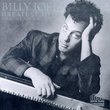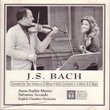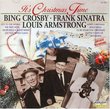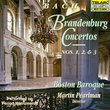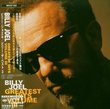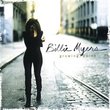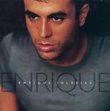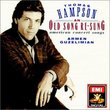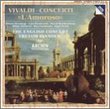| All Artists: Franz Joseph Haydn, Jenö Jandó Title: Haydn: Piano Sonatas, Vol. 7 Members Wishing: 0 Total Copies: 0 Label: Naxos Release Date: 7/28/1998 Genre: Classical Styles: Forms & Genres, Sonatas, Historical Periods, Classical (c.1770-1830), Symphonies Number of Discs: 1 SwapaCD Credits: 1 UPC: 730099480024 |
Search - Franz Joseph Haydn, Jenö Jandó :: Haydn: Piano Sonatas, Vol. 7
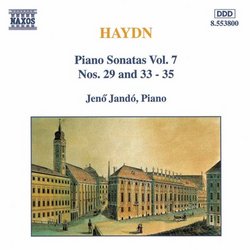 | Franz Joseph Haydn, Jenö Jandó Haydn: Piano Sonatas, Vol. 7 Genre: Classical
|
Larger Image |
CD DetailsSimilarly Requested CDs
|
CD ReviewsExploring the Haydn Sonatas -- Nos. 29, 33,34,35 Robin Friedman | Washington, D.C. United States | 08/27/2009 (4 out of 5 stars) "Joseph Haydn composed for the keyboard throughout his long career. His earlier sonatas were written expressly for the harpsichord. Only in mid-career did Haydn begin to compose sonatas expressly for the piano. It is instructive to listen to Haydn's sonatas chronologically to hear how he developed the form over time. This particular CD of Haydn's sonatas includes the moment of transition - when Haydn changed from denominating a keyboard work for harpsichord and began to designate his writings for the piano. Equally important to this historical transition, the works included on this CD are engaging and delightful. This CD is part of the complete cycle of Haydn sonatas on Naxos performed by Jeno Jando, who is at his best in this repertoire. The disk is available separately or as part of a box set of Jando's performance of the Haydn sonatas that Naxos has released at a budget price in commemoration of the 200th anniversary of Haydn's death. (1732 - 1809).
The four sonatas included on this CD are each in three movements and were composed between 1766 and 1773. They did not get published until a decade later. The earliest sonata, no 29 in E-flat major, Hob.45, dates from 1766. Haydn called it a "divertimento", and it was composed for the harpsichord. Together with two of the other three sonatas on this disk, the work opens with a moderato rather than an allegro. The opening theme is based on a rising and rhythmical two-note phrase, and there is a lyrical secondary theme played over an Alberti bass (a broken 4-note chord.). New listeners should note how Haydn uses a variety of simple thematic material over the course of the movement. The second movement is an andante in two parts. It is based on a light, embellished theme and on a great deal of counterpoint. Throughout the movement, listen to how Haydn has the two hands play in echo of one another. The finale is marked allegro di molto and includes opportunities for virtuosic display by the performer in the long running passages in 16ths and in the use of octaves and broken octaves. In the next work, the sonata no. 33 in c minor, Hob. 20, Haydn writes for the first time explicitly for the piano. This work dates from 1771 and is a contemporary of such Sturm und Drang compositions as the symphony no 39 in g minor and the symphony no. 49, "La Passione". This sonata is a work of passion with a haunting, fiery opening movement interspersed with lengthy passages of opera -like recitif. With its peaceful, comforting theme, based upon repeated notes, extensive embellishments, and a walking accompaniment figure, the Andante con moto middle movement contrasts markedly with its prior and successor movements. In the allegro finale, Haydn returns to an angry c minor filled with dramatic tremolos, runs, pauses, and virtuosic chords. The movement remains in the minor through the end. The sonata no. 34 in D major, Hob. 33, probably was written at about the same time as the c minor sonata, but it is of an entirely different character. The opening allegro features an expansive, outgoing theme played again over an Alberti bass. There is an extensive development section together with sudden, surprising shifts of tempo as the movement progresses. But the heart of this sonata is the spare, introspective adagio which, as does the c minor sonata, shows an aspect of Haydn too frequently overlooked. This movement features a dotted theme and extensive use of triplets. The third movement, which is played without a pause, is a lyrical minuet interspersed with a minor-key theme. Both the main theme and the minor key theme are subject to variation as the movement proceeds. This CD concludes with the sonata in A-flat major, Hob. 43. The authenticity of this work is sometimes questioned because the second movement, which consists of a pair of contrasting minuets, is unlike any other minuet movement Haydn wrote. Based only upon my own unscholarly listening, I would accept the attribution of this sonata to Haydn. The opening moderato movement is lively and graceful with some flashy passages towards the end. Following the minuets, the first of which is march-like and the second of which is light and lyrical, the sonata concludes with a rapid-fire rondo with an engagingly humorous theme, an episode in the minor, and complex passage work for the performer as the sonata ends. Robin Friedman " |

 Track Listings (12) - Disc #1
Track Listings (12) - Disc #1